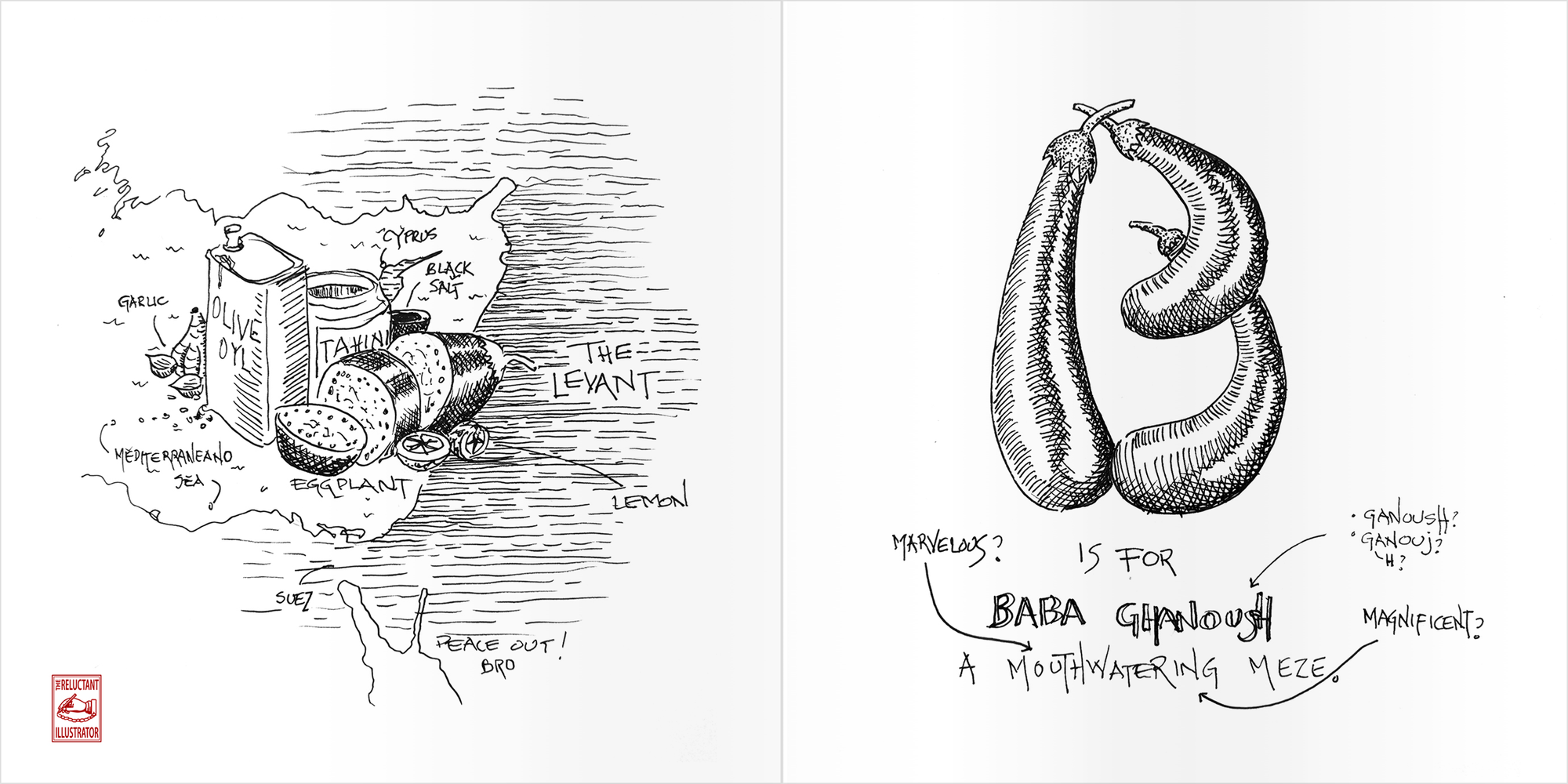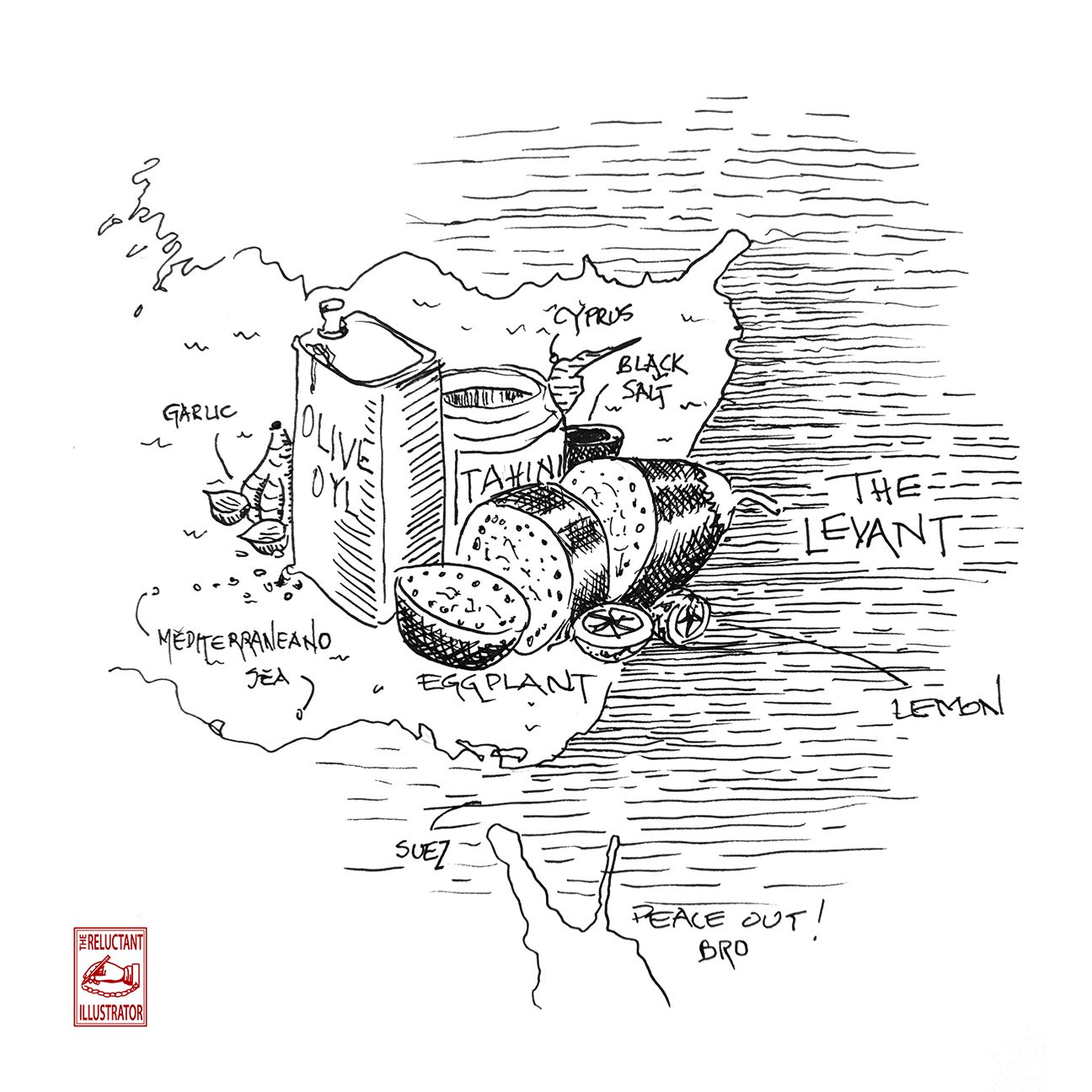B
Abecedarium

Baba Ghanoush has its origins in a loosely defined place - The Levant, perhaps it was a place before there were borders - and perhaps why Baba Ghanoush is such a big spread.

The bābā is an Arabic word that means 'father' and is also a term of endearment, while ġannūj could be a personal name. The word combination is also interpreted as "father of coquetry" or "indulged/pampered/flirtatious daddy" or "spoiled old daddy". It is not certain whether the word bābā refers to the eggplant, or to an actual person indulged by the dish.
It changes from place to place - more cumin and spices - more lemon and herb, and it's always awesome. Charred eggplant on the flame gives it a smokey edge that is just so good.
The Levant feels like a fictional place – for me, it conjures something prototypical - it's a meta place. Maybe its nature was like Baba Ghanoush - same but different - a place of fluidity and interchange – the imposition of boundaries and fractured identities have turned this into a place of foment

Here's Yotam Ottolenghi's Classic Baba Ganoush Recipe
Prep time: 30 min
Cook time: 30 min
Ingredients
- 1 large eggplant (or 2 medium eggplants)
- 2 garlic cloves, finely grated
- 2 tablespoons fresh lemon juice, plus more if needed
- ¼ teaspoon cumin
- ¼ teaspoon paprika
- 2 tablespoons tahini paste
- ¼ cup extra virgin olive oil, plus more for serving
- 1 teaspoon salt
- ¼ cup fresh parsley leaves, chopped
- ¼ cup pomegranate seeds, for serving (optional)
- Char the eggplants. If using a grill, preheat the grill to medium. If using a gas burner, set the flame to medium. Place the whole eggplant on the grill or over the burner and cook, turning occasionally with tongs, until the flesh is extremely tender and skin is very charred, about 15–20 minutes. If using a broiler, place eggplant on a foil-lined baking sheet and broil until flesh is completely tender and skin is charred, about 20–30 minutes.
- Let eggplant cool, about 15 minutes. Slice eggplant lengthwise and scoop out the eggplant flesh, discarding the skin.
- Set a fine mesh strainer over a bowl and allow the eggplant flesh to drain in the strainer, at least 15 minutes.
- Using a mortar or pestle (or a mixing bowl and fork), mash the eggplant flesh together with garlic, lemon juice, cumin, and paprika to form a chunky dip. (For a smoother baba ganoush, pulse eggplant flesh in a food processor.) Add the tahini and continue to mash or pulse until incorporated.
- Add the olive oil in a slow, steady stream while continuing to mash or pulse. Transfer baba ganoush to a serving bowl and season to taste with salt and lemon juice. Gently fold in fresh parsley leaves.
- Drizzle baba ganoush with more olive oil and sprinkle with pomegranate seeds, if using.
Link to his MasterClass Recipe

Member discussion